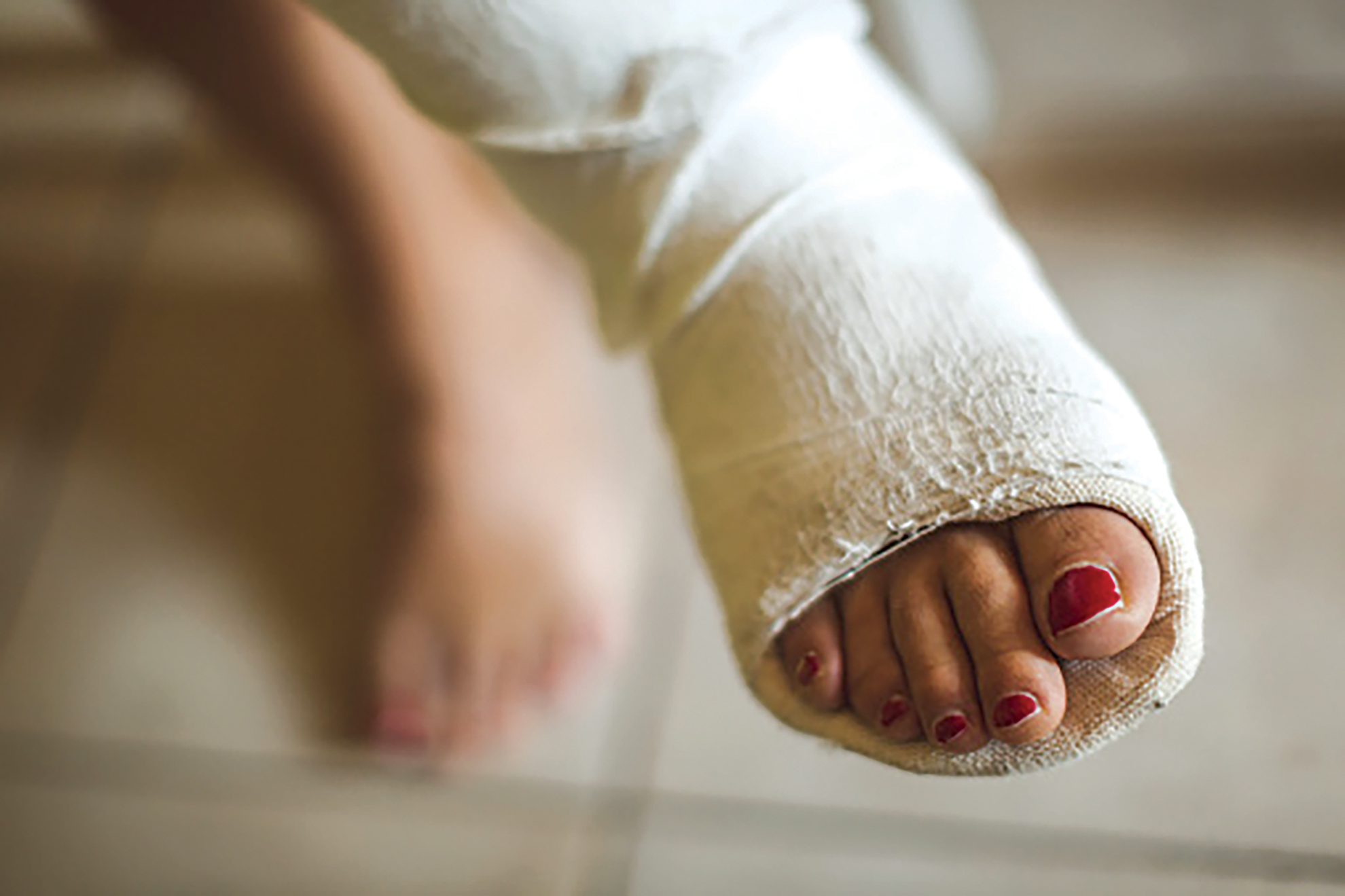
Woman with broken leg
Older women are often told to make sure that they are getting enough calcium in their diet — if not, they should take supplements. Not many women are convinced about this, because osteoporosis or ‘porous bones’ is a silent, creeping disease in which bone mass and strength decrease over time. Finally, a day can come when it manifests in aches and pains and may result in fractures resulting from trivial injuries, especially in the lower back, hip and wrist. In fact, one in two women may suffer an osteoporotic fracture in their lifetime, and it usually happens in older age.
Here I want to go into the anatomical reasons why the doctor’s advice should be followed. The first important thing to know is the connection between menopause and osteoporosis. Oestrogen is the female hormone produced by the ovaries that plays an important role in maintaining bone strength. Oestrogen levels drop during menopause. Hence, at around 50 years, bone loss accelerates. So, if peak bone mass that is attained before menopause is suboptimal, then bone loss may result in osteoporosis.
“Women who are about to reach menopause need to take certain necessary steps to avoid osteoporosis,” says Dr Puneet Mishra, Additional Director and Unit Head, Department of Orthopedics and Joint Replacement, Fortis Hospital Shalimar Bagh. “These measures are extremely beneficial if taken early in life, especially in adolescence.” After menopause, women lose 1-2% of their bone density each year.
The five preventive steps women need to take, as per Dr Mishra, are as follows:
– Healthy Diet: Women older than 50 need up to 1,200 mg per day of calcium. We should take sufficient amount of calcium through dairy products, green leafy vegetables, nuts, beans, tofu, etc. Ideally, the intake should come from meals spread over the day.
– Exercise: Regular exercise drastically improves bone health by increasing the strength of bones and muscles and improving muscular coordination. Exercises done against gravity 30 minutes a day, three to four times a week, are best: walking, jogging, playing tennis and dancing. Better muscular coordination prevents the tendency to fall, preventing fracture.
– Vitamin D: Vitamin D is needed to absorb calcium. Skin exposure to sunlight for 20 minutes every day produces enough Vitamin D. Other sources are eggs, fish like salmon, cereals and milk fortified with Vitamin D. Most people over age 50 need 400-2,000 IU of vitamin D a day. However, excess intake affects liver function and may even increase bone loss. It is advisable to consult a doctor to assess one’s need of supplements.
– Supplements: If your diet is inadequate, take supplements. Calcium and vitamin D supplements are important if you are vegan, are on a high protein/high sodium diet or suffer from bowel disease that limits calcium absorption — or are on corticosteroids. However, excessive doses can increase chances of developing kidney problems; hence avoid self-medication.
– Identify risk factors: Good reasons to go for DEXA scan are early onset of menopause, lean body frame and family history of osteoporosis.
Another word women need to add to their vocabulary is osteopenia, a precursor of osteoporosis. “It means the bones are very brittle and patient has a high risk of bone fracture as compared to normal population,” explains Dr Subhash Jangid, Director and Head, Orthopaedics and Joint Reconstruction, Fortis Memorial Research Institute, Gurugram.
Bone mineral density (BMD) is measured by X-rays. “As radiation is used to perform this test, it is not recommended in premenopausal women,” he cautions. “It is usually repeated only after two years. The screening test to diagnose osteopenia/osteoporosis is by the ultrasound method at the heel area but it is mostly inaccurate and the findings need to be confirmed with Dexa scan. If your score is -1 to -2.5, you have osteopenia. If less than -2.5, it is called osteoporosis.
Remember, both of these are highly preventable diseases, so it is not inevitable that your bones give you trouble in old age.
Dr Reshma is an advocate of wellness, prevention and holistic health. Instagram handle: dr.reshmakhattarbhagat
Police said despite sustained efforts, the accused remained at large and kept changing locations and…
At a debut solo exhibition in Delhi, an architect-artist explores sand, memory and movement through…
Om Taneja (81) and his wife Indira (77), a doctor, were kept under “digital arrest”…
The court observed although appellant had caused death by rash and negligent act, sending him…
AAP leaders were detained during a protest against the BJP over an alleged doctored video…
NDMC is rolling out a G20-style upgrade of roads, lighting and cleanliness to prepare Delhi…